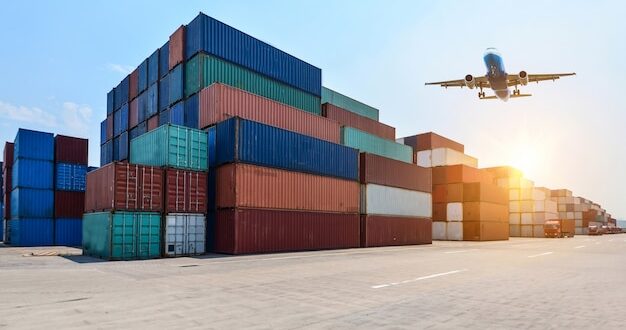In an increasingly interconnected world, the transport of goods has evolved into a complex symphony of logistics, where each method of container transport plays a distinctive role. From the steady cadence of ships traversing vast oceans to the rapid pulse of trucks crisscrossing highways, each method presents unique advantages and challenges.
Whether considering the cost-effectiveness of rail transport or the flexibility of intermodal transport, businesses must navigate a labyrinth of choices that can significantly impact their supply chains. This article delves into the myriad container transport methods available today, unraveling the pros and cons of each to help stakeholders make informed decisions in a competitive market landscape.
Join us as we explore the intricate dance of efficiency, cost, and practicality in the world of container transport.
Types of Container Transport Methods

Container transport methods can be broadly categorized into several distinct types, each tailored for specific requirements and circumstances. Firstly, there’s maritime transport, the heavyweight champion of global trade, enabling the movement of vast quantities of goods across oceans in large container ships—a slow yet economical choice.
Then we have road transport, offering unparalleled flexibility and door-to-door service; trucks maneuver through complex urban landscapes, delivering directly to warehouses or retailers, albeit at a higher cost per mile. On the other hand, rail transport boasts efficiency for long-haul journeys, gliding across vast stretches of land with minimal environmental impact, yet it grapples with limited routing options.
Finally, air freight, the speedster of the group, ensures time-sensitive cargo reaches its destination in record time, sacrificing cost-effectiveness in favor of rapid delivery. Each method presents its unique advantages and challenges, making the choice a strategic consideration for businesses aiming to optimize their supply chains.
Pros and Cons of Rail Transport
Rail transport offers a unique blend of efficiency and sustainability, making it a compelling option for container movement. The ability to carry large volumes over long distances with a reduced carbon footprint stands out as a significant advantage.
Moreover, rail networks often provide reliable schedules, leading to timely deliveries. However, limitations emerge; rail transport is not as flexible as road logistics, often requiring additional handling at terminals.
Infrastructure constraints can lead to delays, particularly in regions with aging rail networks. Additionally, while trains can haul substantial cargo, they may struggle with last-mile deliveries, necessitating further coordination.
In essence, rail transport embodies a double-edged sword: it presents an environmentally friendly alternative with operational efficiency yet faces challenges in versatility and accessibility.
Pros and Cons of Ocean Shipping

Ocean shipping stands as a formidable option in the realm of container transport, offering distinct advantages alongside notable drawbacks. On the positive side, it boasts remarkable capacity for transporting large volumes of goods at relatively low costs, making it an economical choice for international trade.
The sheer scale of shipping containers allows businesses to move everything from industrial machinery to delicate consumer products across vast ocean distances seamlessly. However, it is not without its challenges.
Delays due to weather conditions, port congestion, and strict customs regulations can derail even the best-laid plans. Additionally, the environmental impact of large vessels, which often contribute to ocean pollution and carbon emissions, has sparked increasing scrutiny.
Thus, while ocean shipping can be a cost-effective solution for many, it is essential to weigh these benefits against the potential complications that can arise on this volatile medium.
Conclusion
In conclusion, the choice of container transport method is pivotal for businesses looking to optimize their logistics and supply chain operations. Each method carries its own set of advantages and disadvantages, influencing factors such as cost, speed, and environmental impact.
As highlighted in our discussion, strategies such as road, rail, sea, and air transport each serve distinct purposes that can align with specific shipping needs. For instance, leveraging container transport Brisbane can provide local businesses with efficient access to both domestic and international markets, showcasing the importance of selecting the right transport method. Ultimately, understanding these pros and cons enables companies to make informed decisions that can enhance efficiency and profitability while navigating the complexities of global trade.
 HQ Grande Prairie HQ Grandie Prairie is an online news portal aimed at providing latest day to day happenings of the World to its viewers.
HQ Grande Prairie HQ Grandie Prairie is an online news portal aimed at providing latest day to day happenings of the World to its viewers.

